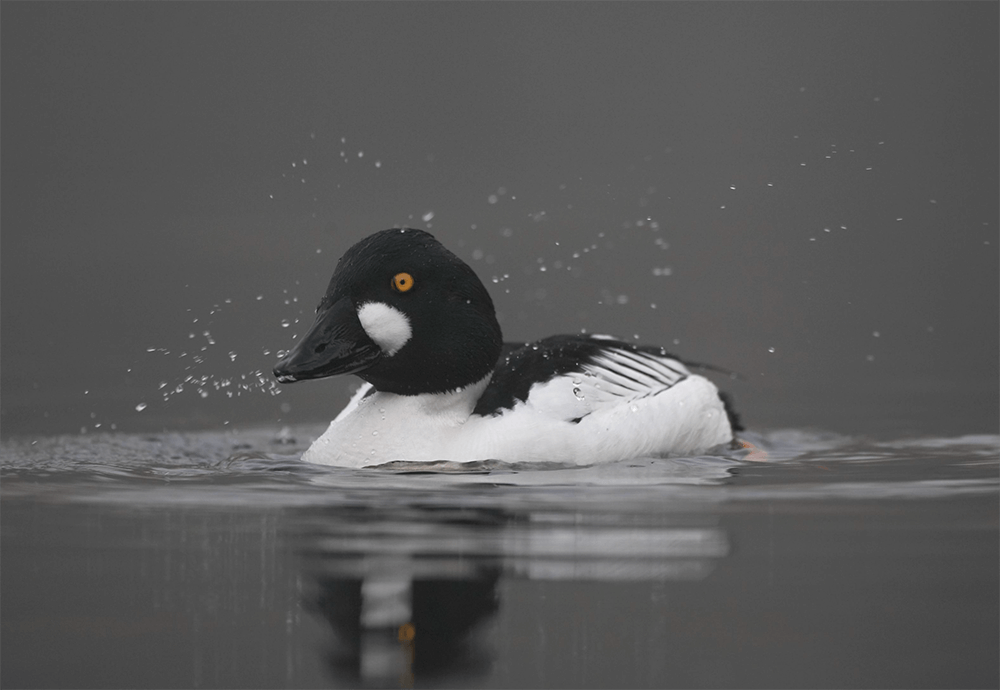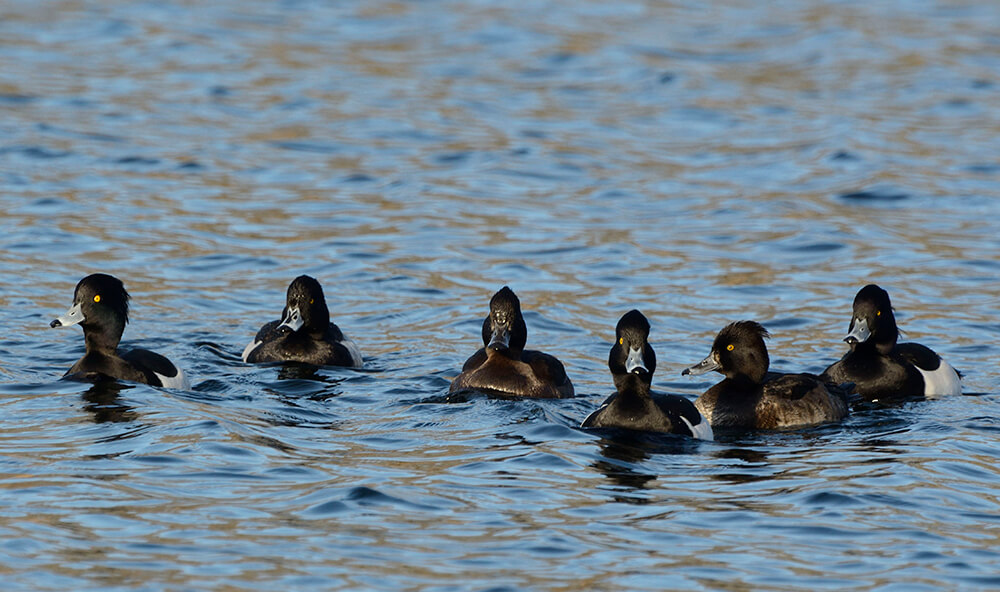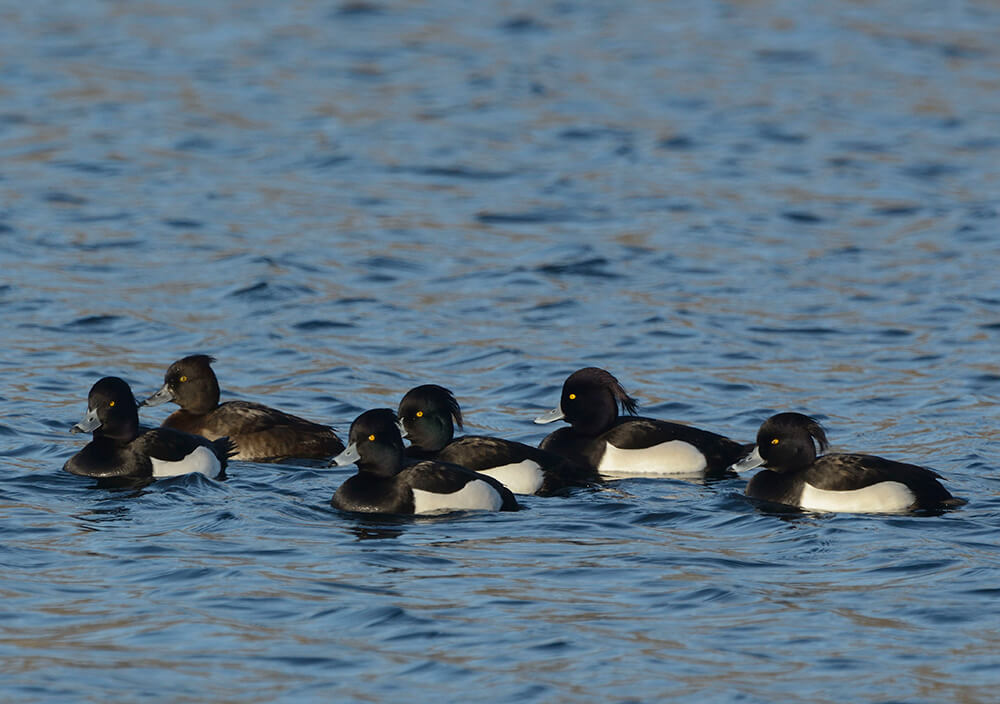Winter and early spring bring a boost in numbers of ducks on our waterways as birds have congregated here from as far away as Northern Europe and Russia. These ducks can be split into two broad groups: dabblers and divers. ‘Diving duck’ is a loose term that covers a wide range of ducks who feed mainly by diving under the water, whether it’s to chase fish, scoop up insects or graze on tasty aquatic plants. Some diving ducks prefer freshwater and are often found on rivers, lakes and reservoirs around Cambridgeshire and across the country. Others prefer the sea and are usually seen from the coast. Many diving ducks can be seen year-round, so here are just some of the more widespread species to spot:
Tufted Duck
The tufted duck is our most common diving duck. It’s found on almost any freshwater body and is often seen in parks and on urban waterways. Males are easily recognised by their black and white plumage and the long tuft of feathers on their head. Females are much browner than males and the tuft on their head is much smaller, but still obvious. They sometimes have white feathers around the base of the bill, similar to scaup, but female tufted duck bills have a broad black tip with a hint of pale band behind it.
Pochard
The pochard is a handsome duck, an uncommon breeding bird in the UK, but a very common winter visitor. Males have a pale grey body with black on the breast and stern, a distinctively bright chestnut head with red eye, and a black bill with a blue-grey band across it. Female pochards aren’t as brightly coloured as males, being mostly grey-brown, with a greyer back and a dark brown head. Young birds resemble females but are more uniformly grey-brown. The head shape is distinctive, with a peaked crown and sloping forehead that runs smoothly into the curve of the bill.
Goldeneyes
Goldeneyes breed in the Scottish highlands, but in winter can be found on lakes, large rivers and coasts around the UK. Males are dazzling, with a black and white body and a large, rounded head. The head is glossy and can appear green or purple depending on the light, with a golden eye and a white patch behind the bill. Females have a mostly ash-grey body with a brown head and a white collar. The eye is pale yellow and the bill is dark, usually with a yellow band across it whilst in breeding plumage. Young birds resemble females but are duller and lack the white collar.
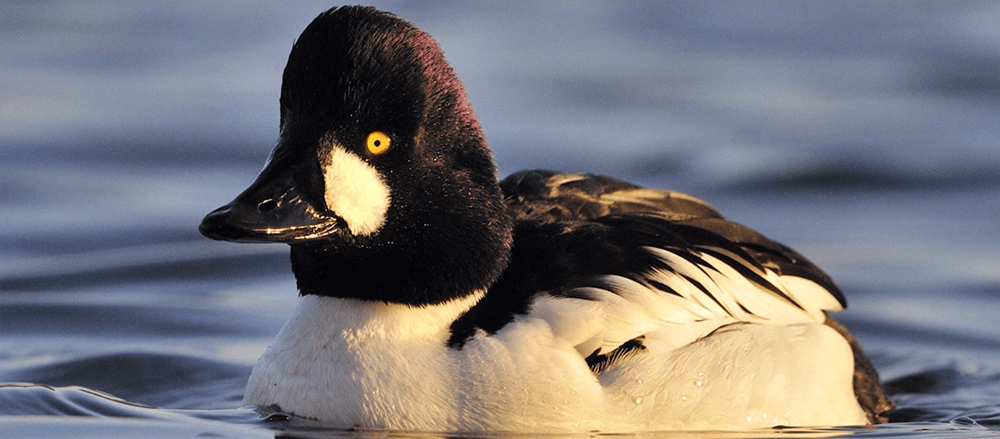
Find out more about diving ducks here www.wildlifebcn.org/wildlife-explorer/identifying-diving-ducks
Get Snappy
With days getting longer, lighter and warmer, getting outdoors will become more and more appealing as we head into spring. The Wildlife Trust’s 2021 Wildlife Photography Competition is now open for entries with this year’s theme of Celebrate the Seasons.
Photographs need to be of wildlife and wild or urban places within the counties of Bedfordshire, Cambridgeshire and Northamptonshire. As usual, an experienced judging panel will choose 24 winning images. These will be published in the Trust’s 2022 calendar. First prize is £250 worth of optics, and second prize is £150 worth of optics, both from Opticron. Third prize is £100 worth of equipment from Campkins Cameras. The closing date is Sunday 2 May, so get snapping!
www.wildlifebcn.org/get-involved/photo-competition
Membership benefits
Being a member of the Wildlife Trust BCN has just got better! Wildlife Trust members qualify for a 20% discount for the first 12 months on a membership with the beautiful Cambridge University Botanic Garden. Join them to visit regularly and take in the wonder of the changing seasons. Spread over 40 acres of green space in the heart of Cambridge, the Cambridge University Botanic Garden supports plant science and conservation, with a heritage-listed landscape offering interest to visitors throughout the year.
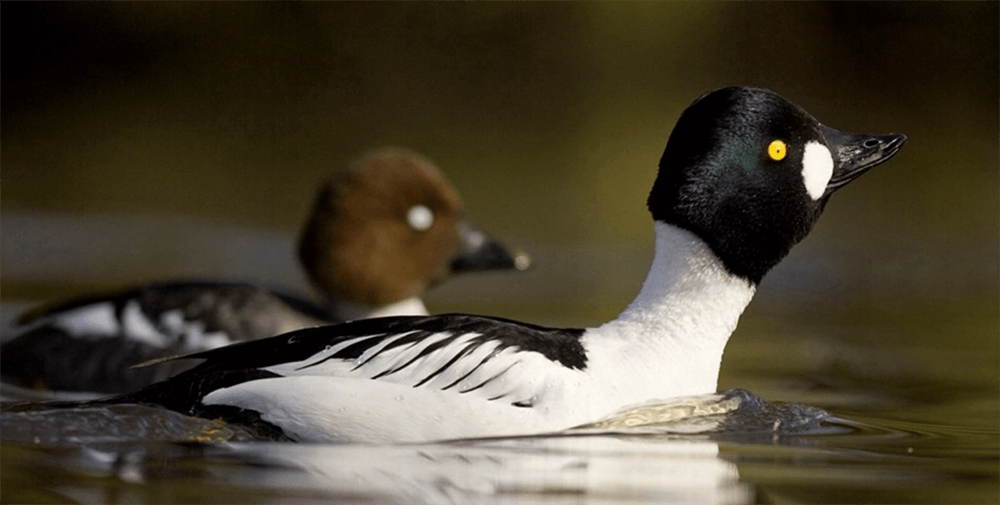
It was founded on this site in 1846, and plants were grown to be used for teaching medical students at the University under the inspiration of John Stevens Henslow, Professor of Botany at Cambridge, 1825 – 1861.
The garden’s collection of 8,000 plant species includes rare and endangered plants from all over the world. So whether you’re interested in plant science, seeking inspiration for your garden, or looking for a relaxing place to visit with friends and family, there’s something for everyone.
www.wildlifebcn.org/cambridge-university-botanic-garden-offer
This article has been reproduced by courtesy of The Fens magazine. Click here to view more of their articles.
To read other wildlife articles click here

